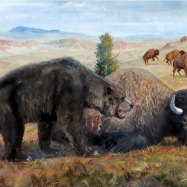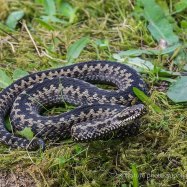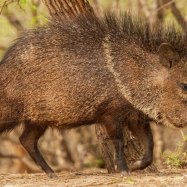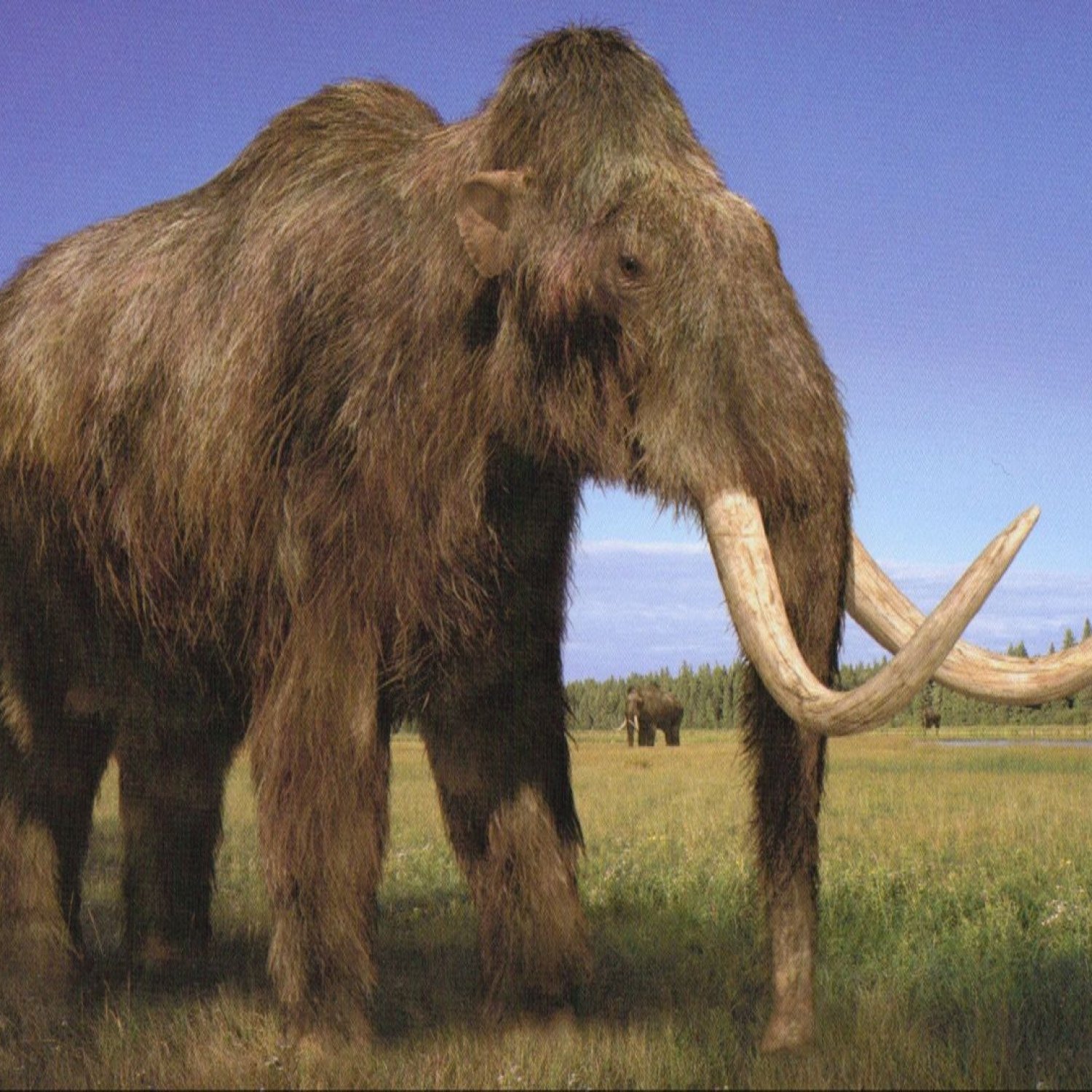
Woolly Mammoth
Up to 13 feet (4 meters)
The woolly mammoth was a majestic creature from the Pleistocene Epoch, with a large and robust body shape and a hump of fat on its back. These gentle giants could grow up to 13 feet in length and were part of the Elephantidae family. Sadly, they became extinct due to climate change and human activity. Let's remember these ancient animals and take care of our current animal species. #woollymammoth #prehistoricanimals #extinctionawareness
Animal Details Summary:
Common Name: Woolly Mammoth
Kingdom: Animalia
Habitat: Tundra
The Mighty Woolly Mammoth: A Prehistoric Wonder of the Tundra
The world has never ceased to amaze us with its incredible creatures, and one such marvel is the Woolly Mammoth (Mammuthus primigenius). This majestic and long-extinct species roamed the Earth during the Pleistocene Epoch, leaving behind a legacy of awe and wonder. From its massive size and unique appearance to its habitat and feeding methods, the Woolly Mammoth continues to captivate our imagination even today. Join me as we journey into the past to discover the remarkable story of the Woolly Mammoth Woolly Mammoth.Ancient Ancestors
The Woolly Mammoth shared a common ancestor with modern-day elephants, and its evolutionary path diverged around five million years ago. It belonged to the Proboscidea order, which also includes other extinct species such as the American mastodon and the Columbian mammoth. These animals were named Proboscidea due to their elongated, flexible nose or trunk, which they used for grasping food and water.
A Family of Giants
The Woolly Mammoth was a member of the Elephantidae family, making it a distant cousin of the elephant species we see today. This family, also known as the elephant family, is one of the few that includes animals of such massive size. Along with the Woolly Mammoth, this family also includes the now-extinct Mammuthus subplanifrons and the modern-day African and Asian elephants.
From the Mammoth Steppe to the Tundra
The Woolly Mammoth inhabited the vast Mammoth Steppe, a treeless, grassy plain that stretched across northern parts of Eurasia and North America. This environment consisted of cold, dry, and windy conditions, making it similar to the tundra habitat we see today. However, due to climate change and natural selection, the Woolly Mammoth gradually adapted to the harsh conditions of the tundra, developing unique features that helped it thrive Western Rattlesnake.
A Herbivore's Diet
The Woolly Mammoth was a herbivore, meaning it only consumed plants. Its diet primarily consisted of grasses, sedges, and other herbaceous plants. As a large animal, it required a lot of food to sustain its massive body, and its diet was mostly limited to what was available in its cold and barren habitat.
A Wandering Giant
The geographical distribution of the Woolly Mammoth was mainly confined to the northern regions of Eurasia and North America. Its remains have been found in countries such as Russia, Canada, and the United States, with the majority of findings in Russia and Siberia. This distribution was a result of the species' adaptation to the harsh climatic conditions of the tundra.
A World Frozen in Time
The Woolly Mammoth lived during the Pleistocene Epoch, which lasted from 2.6 million years ago to 11,700 years ago. This period is known as the Ice Age, a time characterized by extensive glaciation and colder temperatures. As a result, the northern parts of the world were covered in ice and snow, creating a frozen world that the Woolly Mammoth called home.
A Coat of Many Colors
One of the most distinctive features of the Woolly Mammoth was its long, shaggy hair. This hair served as insulation, keeping the animal warm in the cold tundra. Its coat ranged from dark brown to black, and it was made up of two types of hair: a coarse outer layer and a softer inner layer. This thick coat allowed the Woolly Mammoth to survive in sub-zero temperatures, making it a formidable inhabitant of the tundra.
A Body Built for Survival
The Woolly Mammoth was a massive animal, with an average height of about 9-11 feet (2.7-3.4 meters) and weighing up to 6.6 tons (6 metric tons). It had a robust body shape, with a large hump of fat on its back that helped it store energy and withstand harsh weather conditions. Its legs were relatively short and stocky, allowing it to distribute its weight efficiently on the soft and wet ground of the tundra.
Extinction and Preserved Remains
Unfortunately, like many other prehistoric species, the Woolly Mammoth went extinct around 11,700 years ago, marking the end of its reign on Earth. Scientists believe that a combination of factors, such as climate change and human hunting, contributed to its downfall. However, thanks to the cold and frozen conditions of the tundra, many remains of the Woolly Mammoth have been remarkably preserved, providing scientists with valuable insights into its anatomy and behavior.
Bringing Back an Extinct Giant
In recent years, there has been speculation and ongoing research on the possibility of bringing the Woolly Mammoth back to life through cloning or genetic engineering. Scientists have collected DNA from preserved remains and have even experimented with combining this DNA with the DNA of modern-day elephants. While the idea of resurrecting an extinct species is controversial and heavily debated, it is a testament to the lasting impact the Woolly Mammoth continues to have on our world.
In conclusion, the Woolly Mammoth is a true wonder of the tundra and a testament to the incredible diversity and adaptability of nature. From its massive size and unique appearance to its adaptation to the harsh conditions of the tundra, this long-extinct species continues to captivate our imagination and ignite our curiosity. And who knows, with advancements in technology and science, we may one day witness the return of this prehistoric giant to our world. But until then, let us marvel at its legacy and appreciate the mystery and beauty of the Woolly Mammoth.

Woolly Mammoth
Animal Details Woolly Mammoth - Scientific Name: Mammuthus primigenius
- Category: Animals W
- Scientific Name: Mammuthus primigenius
- Common Name: Woolly Mammoth
- Kingdom: Animalia
- Phylum: Chordata
- Class: Mammalia
- Order: Proboscidea
- Family: Elephantidae
- Habitat: Tundra
- Feeding Method: Herbivore
- Geographical Distribution: Northern parts of Eurasia and North America
- Country of Origin: Russia and Siberia
- Location: Pleistocene Epoch
- Animal Coloration: Long, shaggy hair ranging from dark brown to black
- Body Shape: Large and robust, with a hump of fat on the back
- Length: Up to 13 feet (4 meters)
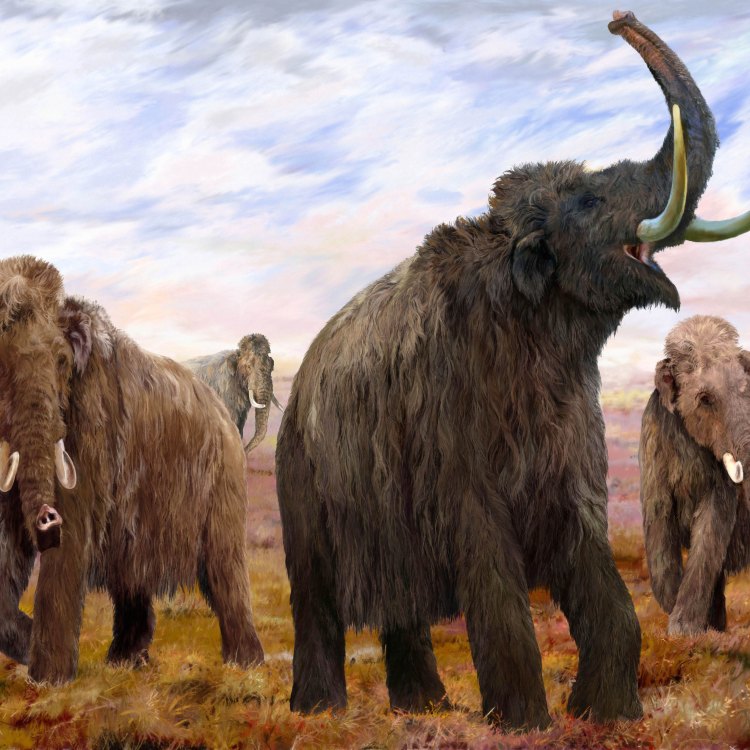
Woolly Mammoth
- Adult Size: Up to 11 feet (3.4 meters) tall at the shoulder
- Average Lifespan: Around 60 years
- Reproduction: Sexual
- Reproductive Behavior: Males competed for mates during the mating season
- Sound or Call: Unknown
- Migration Pattern: Seasonal migration in search of food
- Social Groups: Lived in herds
- Behavior: Herbivorous, grazed on grasses and sedges
- Threats: Hunting by humans and natural climate change
- Conservation Status: Extinct
- Impact on Ecosystem: Maintained the tundra landscape by controlling plant growth and distributing nutrients through their dung
- Human Use: Hunted by early human populations for meat, bones, and tusks
- Distinctive Features: Long, curved tusks and a covering of long, shaggy hair
- Interesting Facts: The Woolly Mammoth was adapted to cold environments with its long hair, hump of fat, and small ears. They went extinct around 4,000 years ago, mainly due to overhunting and climate change.
- Predator: No natural predators
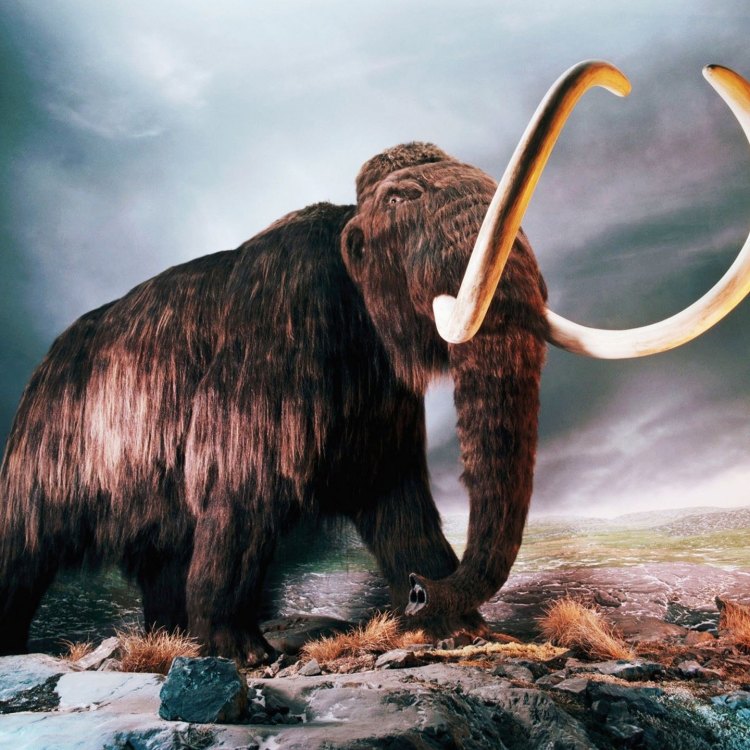
Mammuthus primigenius
The Magnificent Woolly Mammoth: Exploring the Fascinating World of an Extinct Giant
Imagine a creature larger than an elephant, with long, sweeping tusks and a shaggy coat of fur that could withstand the harshest of cold climates. This is the Woolly Mammoth, an ancient species that roamed the Earth during the Ice Age. These majestic creatures have long captured our imagination, and their discovery and extinction have provided us with valuable insight into the world's ever-changing environments. From their impressive size to their reproductive behavior and impact on the ecosystem, the Woolly Mammoth's story is a fascinating one PeaceOfAnimals.Com. In this article, we will delve into the world of this extinct giant and discover what made it such a remarkable and unique species.The Physical Characteristics of the Woolly Mammoth
The Woolly Mammoth, known scientifically as Mammuthus primigenius, was a massive mammal that stood up to 11 feet tall at the shoulder, making it roughly the same height as a modern-day giraffe. This impressive size was achieved through their large, stocky bodies and long, curved tusks that could reach lengths of up to 15 feet. These tusks were used for various activities, from digging for food to battling for mates.One of the most distinctive features of the Woolly Mammoth was its thick, shaggy coat of hair. This fur was essential for keeping the mammoth warm in the cold climates they inhabited. It consisted of long, coarse outer hairs and a dense layer of finer underfur, providing the mammoths with excellent insulation. The thick fur also helped protect them from the elements and harsh winds of the tundra.
Another unique feature of the Woolly Mammoth was its small ears Welsh Black Cattle. These ears were crucial for preventing heat loss, as large ears would have been a liability in the cold climate. The mammoths also had a hump of fat on their backs, similar to camels, which served as an energy reserve during times of food scarcity. These physical adaptations were essential for the mammoths' survival in the harsh environments they inhabited.
Reproduction and Social Behavior of the Woolly Mammoth
Like all mammals, the Woolly Mammoth reproduced sexually. During the mating season, which occurred during the summer months, males would compete fiercely for mating rights with females. This behavior was often displayed through roaring, tusking, and even physical confrontations. Once a male successfully mated with a female, the gestation period would last around 22 months. This lengthy gestation period was necessary for the mammoths to give birth to large offspring that could survive in the challenging tundra landscape.The Woolly Mammoth also exhibited social behavior, living in herds consisting of both males and females. These herds often consisted of multiple family groups, led by a dominant male. The herds would travel together in search of food, water, and suitable habitats. This behavior was crucial for the survival of the mammoths, as they relied on their numbers to protect themselves from predators and search for food more efficiently.
The Impact of Woolly Mammoths on the Ecosystem
The Woolly Mammoth played a vital role in maintaining the tundra landscape they inhabited. As herbivores, they grazed on grasses and sedges, keeping the plant growth in check and allowing for more diverse plant species to thrive. They were also known to trample and uproot vegetation, creating a more diverse habitat for other animals.But perhaps the most significant impact of the Woolly Mammoth on the ecosystem was through their dung. These massive creatures produced enormous amounts of dung, which was scattered across the tundra as they roamed. The mammoths' dung was an essential source of nutrients for other plants and animals, providing fertilization and promoting plant growth. Additionally, as their herds migrated, they would spread the dung, distributing nutrients throughout the tundra, creating a more fertile landscape.
Therefore, the Woolly Mammoth played a crucial role in maintaining the ecosystem's balance in the regions they inhabited. Their extinction has had a significant impact on the tundra landscape and its inhabitants, emphasizing the interconnectedness of all species in an ecosystem.
The Threats Faced by the Woolly Mammoth
Despite their massive size and significant impact on the ecosystem, the Woolly Mammoth was not invincible. These creatures faced multiple threats during their existence, both natural and human-induced. Natural climate change was one of the main factors contributing to the Woolly Mammoth's decline and eventual extinction. As the Earth's climate warmed after the last ice age, the tundra landscape began to vanish, eliminating the mammoths' habitat and food sources. This natural climate change may have also played a role in reducing the mammoths' birth rates, making it challenging for their populations to recover.Another significant threat to the Woolly Mammoth was hunting by humans. Early human populations relied heavily on these giant creatures for survival. Mammoth meat provided a source of protein, their bones were used for tools, and their tusks were used for various purposes. As human populations grew, so did the demand for mammoth resources, leading to overhunting and possibly contributing to their extinction.
Woolly Mammoths: Extinction and Legacy
The Woolly Mammoth went extinct around 4,000 years ago, disappearing from the Earth forever. Their decline stretched over thousands of years, but the exact reasoning behind their extinction remains a subject of debate among scientists. Nevertheless, the Woolly Mammoth's story has provided scientists with valuable insight into the Earth's changing climate and the impacts of human activities on the environment and its inhabitants.Today, researchers continue to study the Woolly Mammoth and its DNA, hoping to one day bring these magnificent creatures back to life through cloning or genetic engineering. This idea has sparked much controversy and ethical debates, with some arguing that we should not interfere with nature in such a way. However, others argue that it is our responsibility to right the wrongs of the past and prevent future extinctions by bringing back extinct species.
In Conclusion
The Woolly Mammoth was a remarkable species, perfectly adapted to survive in the harsh environments of the Ice Age. Their massive size, intricate social behaviors, and significant impact on the ecosystem make them a unique and fascinating species to study and learn about. While their extinction is a heartbreaking loss, it serves as a reminder of the fragility of our planet and the importance of preserving our natural world and its diverse inhabitants. So let us cherish and learn from the Woolly Mammoth, a beautiful and majestic creature that once roamed the Earth in all its glory.

The Mighty Woolly Mammoth: A Prehistoric Wonder of the Tundra
Disclaimer: The content provided is for informational purposes only. We cannot guarantee the accuracy of the information on this page 100%. All information provided here may change without prior notice.


